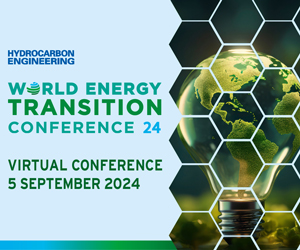Europe is accelerating its transition to clean energy. However, the Netherlands is facing a critical challenge. Grid congestion threatens to slow this essential progress.
Grid congestion occurs when the electrical infrastructure cannot accommodate the influx of renewable energy, particularly from wind and solar sources, and distribute it effectively where it is needed. In the Netherlands, this issue has become urgent, with network operators such as Liander and TenneT warning of delays of up to ten years for new connections or business expansions. According to a joint study by BCG and Ecorys, this congestion could cost the Dutch economy up to 40 billion euros annually. This is not just a challenge for the Netherlands – it is a severe reminder for Europe of the urgent need to modernize infrastructure to support a clean energy future.
As other European countries ramp up their adoption of renewable energy and electrification, they risk falling into the same trap: a grid incapable of handling future demand. In the United Kingdom, the growing demand for electric vehicle adoption and household electrification is placing unprecedented pressure on the grid, with the National Grid forecasting that peak electricity demand could rise by as much as 50% by 2035. Without strategic investments in grid capacity and energy storage, congestion will become inevitable. In Germany, despite record levels of renewable production, grid limitations regularly force northern wind farms to curtail their output due to an inability to transport electricity efficiently to high-demand southern regions. In just 2023, these constraints led to a reduction of about 19 TWh of renewable energy – enough to power more than 5.6 million German homes for a year.
France, traditionally reliant on nuclear energy, faces a different challenge. While nuclear provides a stable supply, integrating decentralized renewable sources like solar and wind requires a more flexible and modernized grid. Without significant improvements, France risks grid congestion that could slow its clean energy transition. These examples underscore why the Dutch crisis is a clear signal of what awaits Europe. Without urgent action, economic growth could slow, energy investments could stagnate, and climate targets could become even harder to reach.
At the heart of this impending network congestion crisis lies the transition to an increasingly variable and decentralized energy system. Wind farms, solar farms, large-scale battery installations, and electric vehicle charging infrastructure interact with the grid, generating and consuming clean electricity on a massive scale. This increases variability and spreads production more widely across the network. However, most of the European grid infrastructure was designed for a centralized energy system, where large power plants – coal, nuclear, or gas – provided stable electricity to homes and businesses.
This aging infrastructure struggles to cope with the influx of intermittent renewable energy injected into the system, coming from geographically dispersed points such as remote wind farms or scattered rooftop solar installations. The result is a grid poorly equipped to transport electricity efficiently from production sites to high-demand areas, causing imbalances, wasting clean energy, and ultimately creating bottlenecks that hinder progress and economic growth. While investments in grid modernization and cross-border infrastructure projects are underway, they remain insufficient to meet the rapid increase in demand and the decentralization of energy supply.
Eurelectric estimates that Europe will need to double its grid capacity by 2050 to integrate variable renewable production and decentralized assets. Yet, current investment levels are woefully inadequate, with only 30 cents invested in grid development for every euro spent on clean energy generation – whereas they should be closer to 67 cents. To prevent grid congestion from derailing the energy transition, Europe must go beyond large grid enhancements and embrace decentralized energy solutions.
First, technologies such as microgrids, battery storage, and behind-the-meter systems enable businesses and communities to generate and store energy locally, thus alleviating pressure on overloaded national grids. By integrating renewable sources like rooftop solar and pairing them with on-site batteries, companies can stabilize supply and increase their independence from the grid’s infrastructural constraints. Secondly, an equally important strategy is the adoption of smart software to connect all components of the energy system and optimize energy flows in real-time, thereby balancing supply and demand.
Combinations of such systems can store excess energy, like the surplus of solar energy generated during the day, and release it during peak demand periods. A notable example comes from the largest supermarket chain in the Netherlands, Albert Heijn, which, faced with grid constraints while electrifying its vehicle fleet, turned to Univers, a global leader in advanced energy management software. To overcome its grid constraints and electrify its fleet, Albert Heijn installed an energy infrastructure that includes on-site energy generation, battery storage, and electric vehicle charging. Univers deployed their software platform to integrate the various components of Albert Heijn’s energy infrastructure and provide automated, real-time control. Connected via IOT and orchestrated by AI, the system not only ensures the smooth operation of Albert Heijn’s fleet but also reduces pressure on the national grid.
Such innovations not only maximize the efficiency and effectiveness of the current grid capacity but also create more flexible and resilient energy systems that can meet the demands of a rapidly electrifying and growing economy.
The situation in the Netherlands highlights the severe consequences of grid congestion when left unaddressed. Businesses face lengthy delays or even outright refusals for new power connections and expansions. Industrial parks struggle to transition to electric operations, while companies eager to invest in sustainable energy projects are left in uncertainty, often withdrawing their plans. Without reliable access to energy, businesses cannot grow. When renewable energy is curtailed, their financial viability diminishes, and emission targets slip further away. This is not just a problem for the Netherlands – it is an urgent issue for all of Europe. As the adoption of renewable energy grows and electrification accelerates, policymakers, grid operators, and businesses must prioritize grid modernization. This is no longer a secondary concern; it must be addressed immediately. The implications are vast: grid congestion is about much more than energy – it concerns economic development, environmental sustainability, and Europe’s ability to lead the global energy transition.

As Europe accelerates its transition to clean energies, the Netherlands faces a major challenge that could hinder the progress made thus far: grid congestion. This situation, if not resolved quickly, threatens not only economic growth but also climate goals, with potentially devastating repercussions across Europe.
What is grid congestion and why is it problematic?
Grid congestion occurs when the electrical infrastructure fails to absorb the influx of power, particularly from renewable sources such as wind energy and solar, and to distribute it where it is needed. This situation leads to imbalances, waste of clean energy, and bottlenecks that slow economic development and ecological initiatives.
In the Netherlands, the problem has become particularly pressing. Network operators such as Liander and TenneT are alerting to waiting times of up to 10 years for businesses seeking new connections or expansions. According to a study conducted by BCG and Ecorys, grid congestion could cost the Dutch economy up to 40 billion euros per year.
However, this is not just a challenge for the Netherlands. It is an alarm signal for all of Europe, highlighting the urgency of modernizing infrastructures to support a sustainable energy future. Countries like the United Kingdom, Germany, and France are facing similar challenges, shedding light on a continental issue.
What are the impacts of grid congestion on the economy and the environment?
Grid congestion has significant repercussions on the economy and the environment. For businesses, delays or refusals of new electrical connections complicate the transition to more sustainable operations. For example, in the Netherlands, industrial parks are struggling to shift to electric operations, while businesses eager to invest in sustainable energy projects find their plans put on hold, compromising their financial viability and emissions reduction goals.
Environmentally, congestion prevents efficient use of renewable energies. In Germany, for example, network limitations regularly force northern wind farms to reduce their output, resulting in underproduction of around 19 TWh of renewable energy in 2023, which is enough to power more than 5.6 million German homes for a year.
Moreover, without appropriate infrastructure, decarbonization ambitions risk slipping away, further delaying global efforts to combat climate change. The inability to effectively integrate renewable energy sources could lead to continued reliance on fossil fuels, hindering European and global climate goals.
What solutions can the Netherlands and Europe adopt to resolve this issue?
To prevent grid congestion from slowing the energy transition, the Netherlands and Europe must adopt innovative and diverse solutions. One of the key approaches is to modernize existing infrastructures and invest in decentralized technologies.
Technologies such as microgrids, battery energy storage, and behind-the-meter systems allow businesses and communities to generate and store energy locally, thereby reducing pressure on overloaded national grids. For example, the Dutch supermarket chain Albert Heijn has installed an energy infrastructure including on-site energy production, battery storage, and electric vehicle charging stations. Through an advanced software platform, Albert Heijn was able to integrate these components, providing automated, real-time control, which not only ensured the smooth operation of its electric vehicle fleet but also reduced pressure on the national grid.
Investments in the grid and smart infrastructure
In addition to decentralized solutions, investing in smart infrastructure and cross-border projects is essential. The adoption of smart software capable of managing and optimizing energy flows in real-time is a crucial step. These systems can store excess energy produced during low-demand periods and release it during consumption peaks, effectively balancing supply and demand.
Despite ongoing investments, which include grid improvement projects and cross-border initiatives, they remain largely insufficient in the face of the rapid increase in demand and the decentralization of energy production. According to Eurelectric, Europe will need to double its grid capacity by 2050 to integrate variable renewable production and decentralized assets. However, current investment levels fall far short of the 67 cents invested in grid development for each euro spent on clean energy production, with only 30 cents currently invested.
How are other European countries dealing with grid congestion?
The situation in the Netherlands is just one example among others across Europe. Each country must adopt strategies suited to its own challenges and energy contexts.
In the United Kingdom, the growing demand due to the adoption of electric vehicles (EVs) and the electrification of homes puts unprecedented pressure on the grid. The National Grid predicts that electricity demand could increase by up to 50% by 2035. Without strategic investments in grid capacity and energy storage, congestion will become inevitable, jeopardizing the country’s energy transition objectives.
In Germany, despite record renewable energy production, grid limitations hinder the efficient transmission of electricity produced in northern regions to high-demand areas in the south. This inefficiency leads to underutilization of renewable capacity and rising energy costs.
France, on the other hand, traditionally relies on nuclear energy for its energy supply. However, integrating decentralized renewable sources like solar and wind requires a more flexible and modernized grid. Without significant updates, France risks experiencing grid congestion similar to that faced by its European neighbors, slowing its own transition to cleaner energies.
What are the long-term consequences if grid congestion is not resolved?
If grid congestion is not proactively resolved, the long-term consequences could be serious and varied. Economically, businesses may experience significant delays in their development and expansion projects, leading to a decrease in investments in key renewable energy sectors. This would limit not only economic growth but also job creation in an expanding sector.
In terms of the environment, grid congestion would compromise decarbonization efforts. The limited capacity to integrate renewables would make it harder to meet climate goals, increasing greenhouse gas emissions and contributing to global warming.
Moreover, the loss of energy efficiency due to bottlenecks in the grid could lead to rising energy costs for consumers, reducing purchasing power and increasing social inequalities. Inadequate electrical infrastructure also stifles technological innovation, limiting the potential for new energy solutions that could emerge to address future energy challenges.
What lessons can we learn from the Dutch situation for the rest of Europe?
The current crisis in the Netherlands serves as a valuable lesson for the rest of Europe. It demonstrates that without proactive planning and adequate investments in electrical infrastructure, even the most advanced countries in the energy transition can find themselves blocked. The urgency of modernizing the electrical grid cannot be underestimated, and European governments must act quickly to avoid a widespread energy crisis.
Management studies on congestion in the Netherlands have revealed potential solutions, such as increasing grid capacity and optimizing energy flows. Moreover, initiatives like the attempt to charge EVs during low-demand hours showcase the potential for successful transitions if the right strategies are implemented.
Furthermore, integrating sustainable mobility solutions, as highlighted by Green Just Now, is essential to reduce pressure on electrical grids. By encouraging the use of electric vehicles and developing smart charging infrastructure, it is possible to distribute electricity demand more evenly across the grid.
Initiatives aimed at connecting solar installations, such as P3 and Sunrock, also demonstrate how collaboration between companies can contribute to better energy management and reduce grid congestion.
How can technology help mitigate grid congestion?
Technology plays a crucial role in solving grid congestion. Advances in artificial intelligence and Internet of Things (IoT) enable more efficient and dynamic management of energy flow. For example, smart software can analyze real-time production and energy consumption, automatically adjusting flows to optimize the use of available resources.
An inspiring example is Albert Heijn, the largest supermarket chain in the Netherlands. Faced with network constraints while electrifying its vehicle fleet, the company partnered with Univers to deploy an integrated software platform. This solution synchronizes on-site energy production, battery storage, and EV charging, optimizing energy use and reducing strain on the national grid.
Moreover, solar panel connection projects illustrate how cutting-edge technologies can transform energy infrastructures, making systems more resilient and adaptive. By combining energy storage and advanced management software, it is possible to create more flexible electric networks capable of responding to fluctuations in demand and supply.
The rise of microgrids and battery storage systems also enables more effective distribution of locally generated energy, thereby reducing dependence on large centralized grids. These decentralized solutions provide greater autonomy and better resilience against service interruptions and demand spikes.
What role do public policies play in managing grid congestion?
Public policies are essential for addressing grid congestion effectively and coherently. Governments must establish regulations and financial incentives to encourage investment in electrical infrastructure and innovative technologies. For instance, grants for energy storage projects or tax credits for companies adopting energy management solutions can stimulate innovation and rapid adoption of new technologies.
Furthermore, integrated strategic planning at the European level is necessary to harmonize efforts among different countries and ensure effective coordination of cross-border infrastructures. Initiatives like developing road pricing by the mile in the UK show how policies can be used to manage energy demand and encourage more sustainable practices.
It is also crucial for policymakers to recognize the importance of education and awareness regarding energy. Informing citizens and businesses about the challenges of grid congestion and possible solutions can foster greater collaboration and collective engagement to overcome these obstacles.
Finally, public-private partnerships can play a decisive role in financing and developing energy infrastructure projects. By combining resources and expertise from both the public and private sectors, significant advances in modernizing electrical grids and integrating renewable energies can be achieved.
What are the benefits of decentralized solutions for energy management?
Decentralized solutions offer numerous advantages for managing grid congestion and supporting the energy transition. By distributing production and energy distribution, these solutions reduce reliance on centralized infrastructures, thus increasing the resilience and efficiency of the energy system.
Microgrids allow local communities and businesses to produce and consume their own energy, which reduces the demand on the national grid. For instance, by integrating solar panels and on-site energy storage systems, microgrids can provide a reliable and stable energy source, even during outages or demand spikes.
Battery energy storage is another key element of decentralized solutions. Batteries can store excess energy generated during low-demand periods and release it when demand rises, thereby balancing energy flow and reducing strain on the main grid.
Moreover, the adoption of smart software allows for more efficient management of energy flows, optimizing the use of available resources and minimizing losses. These systems can anticipate energy needs and adjust production and consumption in real-time, ensuring a more balanced and efficient distribution of energy.
Decentralized solutions also foster innovation and flexibility. They enable businesses and communities to test new technologies and develop innovative approaches to energy management, thereby contributing to a more dynamic and adaptable energy transition.
In addition, these solutions can stimulate the local economy by creating jobs in the renewable energy sector and encouraging the development of new skills and technical expertise. This contributes to sustainable economic growth and a reduction in greenhouse gas emissions, aligning with European climate goals.
How can businesses contribute to solving grid congestion?
Businesses play a crucial role in solving grid congestion by adopting innovative energy management strategies and investing in decentralized technologies. By integrating on-site production and energy storage systems, businesses can reduce their dependence on the national grid and contribute to a more balanced distribution of energy.
For example, by installing solar panels and storage batteries, companies can generate their own energy and store excess for later use. This not only reduces energy costs but also diminishes pressure on the grid during peak demand periods.
Moreover, adopting energy management software, like that used by Albert Heijn in collaboration with Univers, allows for real-time optimization of energy flows. These intelligent systems can automatically adjust energy production and consumption based on needs, ensuring effective use of available resources and reducing the risk of congestion.
Companies can also participate in collective initiatives aimed at improving energy infrastructure. By collaborating with other stakeholders, they can contribute to large-scale projects that modernize the electrical grid and facilitate the integration of renewable energies.
Finally, businesses can play an active role in advocating for policies favorable to the energy transition. By pushing for regulations that support investments in renewable infrastructure and energy management technologies, they can positively influence the energy landscape and facilitate a smoother transition to a sustainable future.
What are the future prospects for managing grid congestion?
In the future, managing grid congestion will depend on the ability of European countries to adopt innovative solutions and invest significantly in energy infrastructures. Transitioning to a decentralized and intelligent energy system is essential to meet the challenges posed by increasing renewable energy production and growing electricity demand.
Microgrids, energy storage, and smart management software will continue to play a key role in reducing congestion and improving energy efficiency. Additionally, the rise of emerging technologies, such as artificial intelligence and Internet of Things, will enable more proactive and predictive management of energy flows, thereby minimizing risks of congestion and optimizing the use of available resources.
Moreover, cross-border collaborative initiatives, supported by favorable public policies, will be crucial to ensure a smooth integration of energy infrastructures across Europe. This will not only facilitate a more balanced distribution of energy but also ensure a coordinated response to fluctuations in demand and production.
Furthermore, the focus on innovation and research in the renewable energy sector and energy management technologies will continue to drive significant advancements. These progressions will develop more effective and sustainable solutions to manage grid congestion while supporting the transition to a clean and resilient energy future.
Finally, raising awareness and engaging citizens and businesses will be essential to ensure the success of these initiatives. A better understanding of the issues surrounding grid congestion and available solutions will encourage active participation and collaborative efforts, thereby facilitating a smooth and sustainable energy transition.
#Bus Ligne 50 : Congestion, arrêts non desservis entre Montagne Verte et Schnokeloch direction Schiltigheim le Marais.
— CTS_Infos trafic (@CTS_Infostrafic) October 22, 2024
Articles similaires
Thank you!
We will contact you soon.














